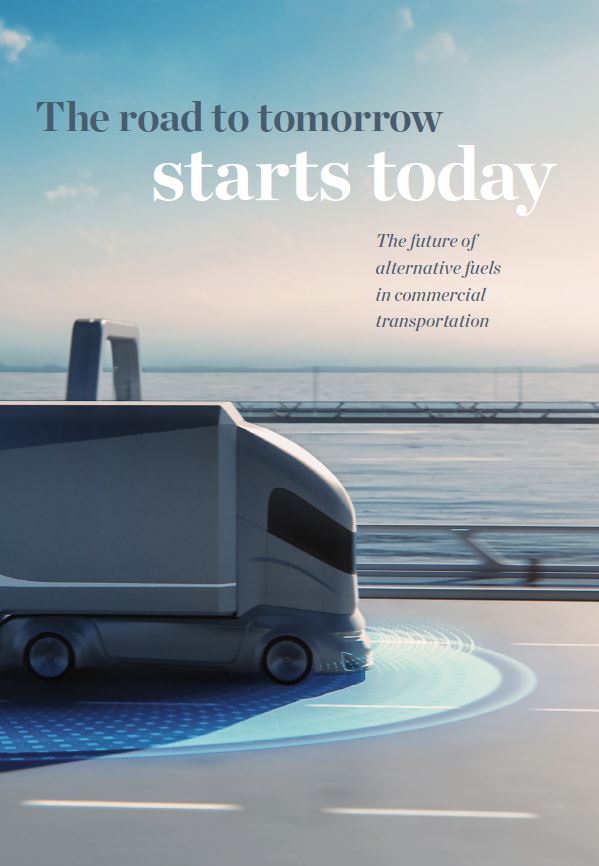Upsize to HGV Fleet for Greener Motoring
1st June 2023

As the UK gets to grips with a revamped government strategy to meet its 2030 emissions cut target, the pressure is on for fleet decision-makers to run a more flexible, environmentally friendly fleet. Whilst upgrading a fleet to larger vehicles may not seem an obvious answer to achieving this ambition, Venson Automotive Solutions argues that they come with many advantages.
“It may not fit every business model, but upsizing can not only improve a business’s carbon footprint but reduce costs and boost productivity,” says Simon Staton, Client Management Director for Venson. “Furthermore, the socio-economic aspect of an upsize can give a competitive edge by demonstrating a responsible corporate image. It’s understandable that fleet managers may feel unsure of the process involved with upsizing, but with careful planning and strategic thinking, coupled with relevant guidance, evolving a fleet can be done smoothly and efficiently.”
Driver recruitment, vehicle and company compliance, licences and the complexities of moving up to commercial vehicles beyond 3.5t are all discussed in Venson’s free whitepaper ‘Operating Commercial Vehicles Beyond 3.5t GVW whitepaper’.
Upskilling investment is an important factor businesses need to take into consideration, but one that will save in the longer term and play a considerable role in replenishing the UK’s diminished Heavy Goods Vehicles (HGV) skills sector. Most standard passenger car driver licences only entitle their holders to drive vans up to 3.5t GVW. To drive a vehicle beyond 3.5t up to 7.5t GVW, requires a C1 licence, whilst a driver must be in possession of a specific HGV Class 2 licence to drive a truck over 7.5t GVW. However, a driver with a Class 2 licence can drive any rigid truck way beyond 7.5t, so once this driver investment is made, a business can increase the size of its fleet vehicles if the business requirement were there.
Individuals that drive HGVs and Light Commercial Vehicles (LCVs) weighing 3.5ts GVW and upwards professionally are also required to hold a Driver Certificate of Professional Competence (CPC) qualification as a legal requirement. This is obtained by completing 35 hours of training followed by competency exams. This process needs repeating every five years for the driver to maintain legal compliance.
However, Venson stresses the significant benefits to be had from upsizing. Simon Staton concludes, “An average large delivery van can carry a load weighing 1,000 to 1,800kg, yet a 7.5 GVW truck can manage 3,000 to 4,500kg, a two to threefold increase, meaning the potential to run two less vehicles to carry out a similar workload is a viable option. When you factor in that a 16-tonne GVW rigid trucks’ carbon footprint isn’t usually vastly different to a 7.5t truck, then it’s even easier to comprehend the financial and emissions savings to be gained.”
Download a copy of ‘Operating Commercial Vehicles Beyond 3.5t GVW whitepaper’
VENSON’S CHECKLIST TO PLANNING AND EXPANDING A FLEET BEYOND A 3.5T GVW
• Lay out key requirements and ensure clear reasoning as to why new vehicles are required and what they’ll allow your company to achieve.
• Get the right administration people and drivers in place by re-training current staff or recruiting new staff.
• Carefully research the best base vehicle to suit the new needs. Considerations should include availability, list price, maintenance facility location, projected running costs and suitability for intended role.
• Body and Equipment – Are your needs met by off-the-shelf conversions? If not, your fleet management provider can help with defining a vehicle specification and sourcing a reputable bodybuilder.
• Understand impact on operating base, is it already appropriate or is a move required?
• Decide on the preferred method of financing to suit your company needs with the help of external experts and your own accounting.
• Reporting – Ensure that any systems for vehicle and driver reporting are in place and a team member is empowered to carry this out as part of their daily routine.
• Maintenance – It is vital that a clear and well-managed maintenance plan is put in place and adhered to.
• Management – As the jobs and vehicles become more complex, so does the task of managing them, and their drivers. Ensuring clarity with regards responsibilities is paramount.
• Compliance – Driver, vehicle, licences, ancillary equipment and operating base all have to be compliant with the laws of the road and the land.

